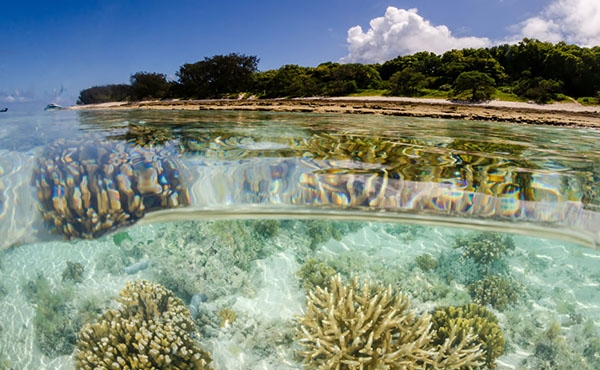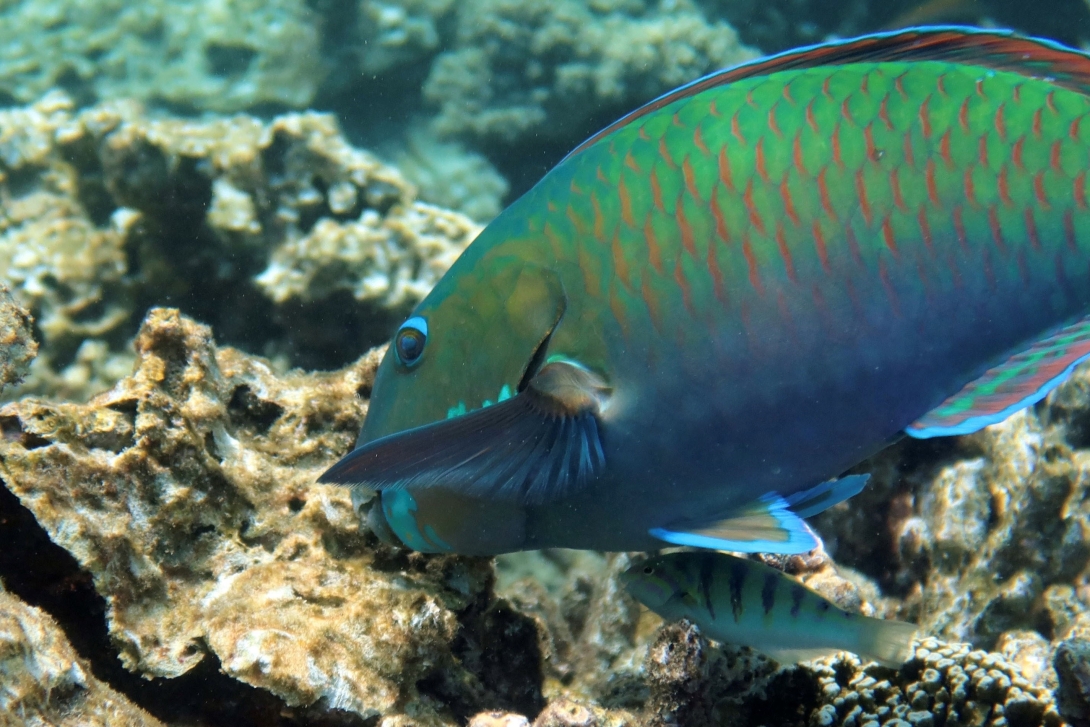“Dugongs and seagrasses tell us that Sea Country is healthier and we can see the dugong tracks in the seagrass. It’s looking so healthy. There’s so much marine life. It’s thriving. Our reef is very strong, even the science is showing us that our part of the Reef has special resilience in some species, like seagrass and sea meadows.
“Dugong are back, seagrass, fish life, the water quality, the whole reef restoration process. This year, I’ve noticed a brighter pink, and that indicates a stronger spawn. It’s been different, and healthier all round. Our coral were able to become more heat tolerant by adapting to conditions and being resilient.
“It reminded me of us, of Woppaburra people. Looking at the coral and how it adapts, and relating that to our adaptation, made it easy for me (to relate to the science). The cycle of our life of how it spawns and then just floats along in its seabed environment, and the dangers it faced, and the things it had to tolerate to find its way home, build its home, and its stability. We’re learning about ourselves as we learn about the coral and it makes it easier to talk about and share.”
— Meaghan Cummins, Woppaburra Traditional Owner
The Traditional Owners of the Keppel Islands (16 out of the island group), lying off the Capricorn Coast in Central Queensland — are the sea-faring Woppaburra people. Coral rehabilitation is just one of many marine and cultural projects that has paved the way for the Woppa (island) ‘burra’ (people belonging to) to re-embrace custodianship of their Country and Sea Country.
Woppaburra Traditional Owner, Meaghan Cummins, reflects on an emotional journey of mob coming home to Woppa and the cultural and marine conservation work underway.
Caring for Country is paving the way for healing on Country. Meaghan says there has been a long-needed shift from ‘science working on us, to science working with us.’ This focus on science for good is also enabling a revitalisation of cultural heritage and knowledge with positive inter-generational impacts for Traditional Owners.
“In the beginning, scientists would take coral for the formalities of study, but now we work with the Australian Institute of Marine Science (AIMS) who then engaged with us and involved us. They respected the importance of generational processes of decision-making and understood that we had to go back to families. Some families take longer and they gave us the space to do that.”
— Meaghan Cummins, Woppaburra Traditional Owner
Source: Caring for Sea Country — Traditional Owner Stories from the Great Barrier Reef 1



